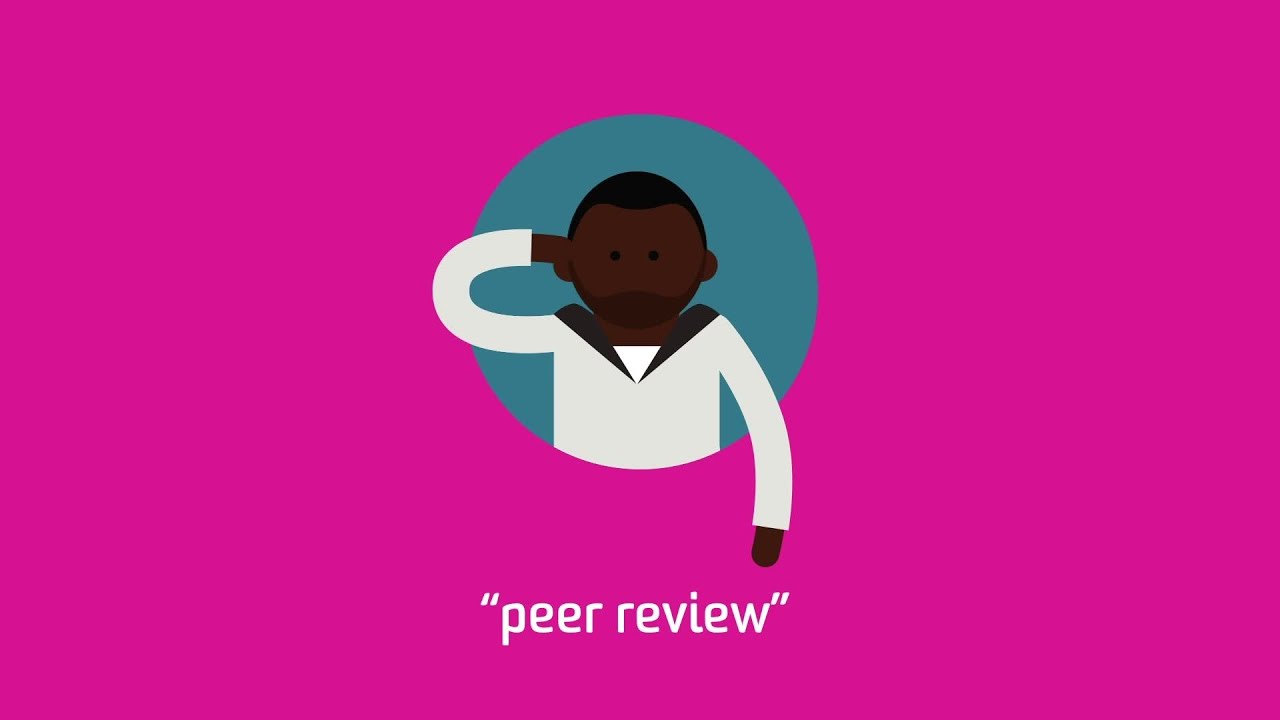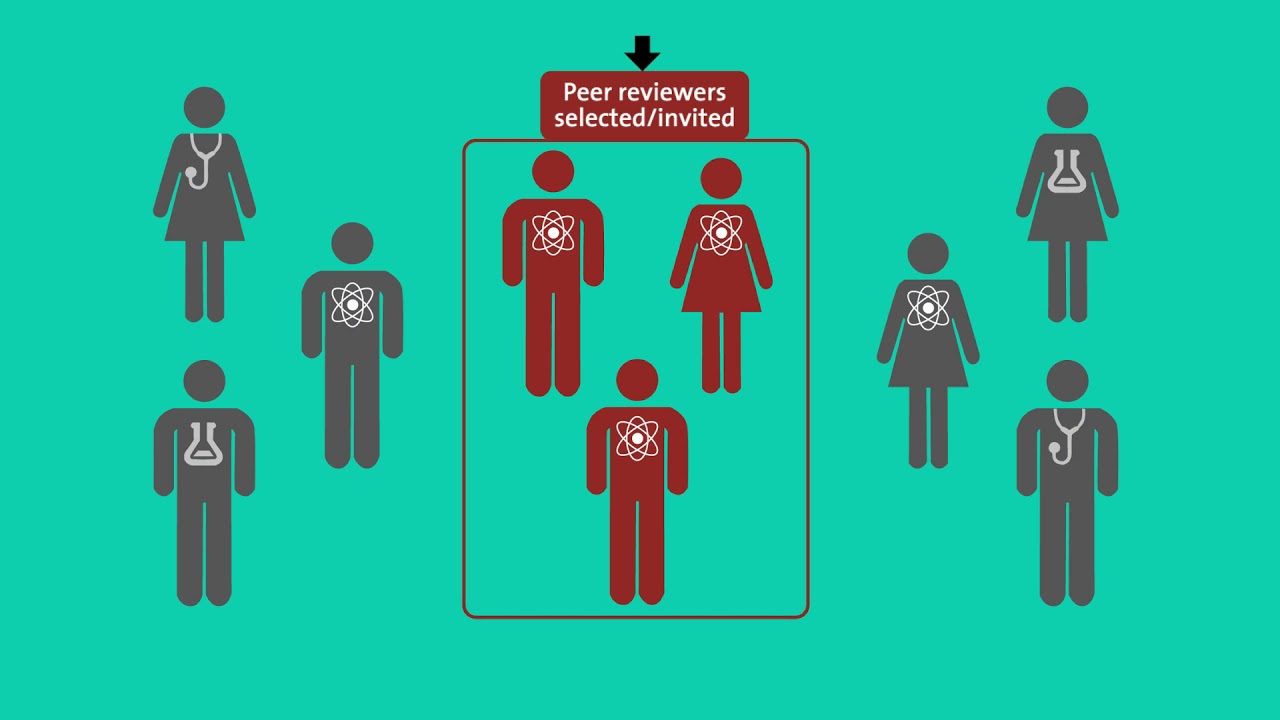Peer Review - An Overview Of The Process, Benefits, And Pitfalls
Peer review is the work appraisal by one or more persons with comparable competencies as the work's creators (peers). Peer review verifies research, develops a system for evaluating it, and expands networking opportunities within research groups.
Author:Suleman ShahReviewer:Han JuDec 30, 202231 Shares1.1K Views

Peer reviewis the work appraisal by one or more persons with comparable competencies as the work's creators (peers).
Peer review verifies research, develops a system for evaluating it, and expands networking opportunities within research groups.
It serves as a kind of self-regulation by qualified members of the relevant profession.
Peer review methods are used to maintain quality standards, increase performance, and establish credibility.
Scholarly peer review is often employed in academia to assess the eligibility of academic work for publication.
The collaborative peer review approach that we utilize is one of a kind and is focused on quality.
What Is Peer Review?
Putting an author's academic work, research, or ideas to the examination of otherswho are specialists in the same area is characterized as peer review.
Peer review is meant to fulfill two main functions.
It functions as a filter to guarantee that only high-quality research is published, particularly in recognized journals, by analyzing its validity, importance, and originality.
Second, peer review enhances the quality of accepted articles for publication.
Peer reviewers advise writers on improving the quality of their papers and highlight any problems that must be corrected before publication.
Peer review has become the cornerstone of the academic publishingsystem because it successfully puts an author's work to examine other experts in the area.
As a result, it motivates writers to strive for high-quality research that advances the area.
Peer review also promotes and preserves scientific integrity and authenticity.
The academic community does typically not accept a scientific idea or assertion until it has been published in a peer-reviewed publication.

What is Peer Review?
What Is The Main Purpose Of Peer Review?
Peer review is intended to examine the validity, quality, and, in some cases, originality of works submitted for publication.
Its ultimate goal is to protect scientific integrity by screening out invalid or low-quality papers.
Peer review serves as a content filter for publishers, guiding higher quality papers to better quality journals and building journal brands.
Running articles via the peer review process adds value to them. As a result, publishers must ensure that peer review is rigorous.
How Does The Peer Review Process Work?
The peer-review process proceeds as follows:
- The author first sends the work to the editor.
- The editor has two options:
i) Reject the manuscript and return it to the author, or ii) Send it to the chosen peer reviewer (s)
- The peer review procedure follows. The reviewer delivers input, noting any significant or minor faults with the text and advising on what changes should be made.
- Finally, the corrected work is returned to the author. They make the necessary changes and resubmit it to the editor for publication.

The Peer Review Process
Types Of Peer Review
The three most prevalent are single-blind, double-blind, and open peer review methods.
Transparent, collaborative, and post-publication peer reviews are significant variants of the usual technique that have emerged throughout time.
- Single-blind:The author does not know who the reviewer is.
- Double-blind:The reviewer is unaware of the author's identity and vice versa.
- Open Peer review:All parties know the author's and reviewer's identities during or after the inspection.
- Transparent Peer Review:The review report is published with the published paper. The reviewer has the option of disclosing their identity.
- Collaborative:Two or more reviewers collaborate to provide a unified report, or the author revises the text with the assistance of one or more reviewers.
- Post-publication review:A requested or unsolicited review of a previously published article. Other types of peer review are not excluded.
Peer Review Handbook
Reviewers serve as a vital link between the author and the managing editor. Reviewers help and allow other researchers to get their work out to the public in the best possible shape by drawing on their knowledge.
To assist our reviewers, we have compiled some recommendations and lists of things to think about while preparing to review and writing a fair and critical review.
Before Accepting The Invitation
When you get a review request, you must examine the following considerations before accepting:
- Consider if the manuscript falls within your area of expertise. If not, please refuse the invitation and consider assisting us by recommending other suitable experts.
- We want to make our peer review process fast. Thus, reviewers are asked to complete their reports within seven days after accepting the invitation. If you are unable to offer a review but may be able to participate at a later date, please notify the Editorial Office.
- Once the invitation is accepted, you will be requested to answer a brief questionnaire on conflicts of interest to establish any relationship with the author(s) of the manuscript that may make reviewing improper for you. Conflicts of interest are evaluated on a case-by-case basis and may not be disqualifying, so please provide complete responses. More information is accessible here.
- We request that reviewers reply to the review invitation as soon as possible. You are, of course, free to reject to review if you believe you do not have the necessary time or knowledge, and we always welcome suggestions for alternative reviewers.
If a reviewer realizes that 7 days will not be enough time to finish their review, or if the deadline will be extended after the invitation has been accepted, they should inform the Editorial Office. We will gladly help you.
During The Peer Review Process
Before submitting an article for peer review, the OAPL team and the managing editor will have performed preliminary quality checks.
Our reviewers' goals should always be to:
- Focus objectively on the quality of the science
- contribute toward improvement and think constructively
- provide explicit comments to assist the author and editor in understanding what is required.
Conclusion
The greatest thing that peer review can do is increase the quality of published articles.
It accomplishes this by encouraging authors to submit work of a high level – and then improving that work via peer review.
People Also Ask
What Is The Peer Review Process And Why Is It Important?
Peer review entails putting the author's academic work and study to examine other experts in the same area to ensure its validity and eligibility for publishing.
A peer review assists the publisher in deciding whether or not to accept a work.
What Makes A Good Peer Review Process?
Our evaluation should be concise, constructive, and consistent.
Clarity is essential since writers will be unable to answer your problems if they do not completely comprehend what they are.
Reviews are most valuable when they not just criticize but also give constructive ideas for how problems might be fixed.
What Are The Four Steps In The Peer Review Process?
- Step 1: Assess the editor and download the PDF.
- Step 2: Conduct the first round of peer review. The editor will next locate and contact other researchers who are specialists in your area, requesting that they examine the manuscript.
- Step 3: Revise and resubmit your work.
- Step 4: Acceptance.

Suleman Shah
Author
Suleman Shah is a researcher and freelance writer. As a researcher, he has worked with MNS University of Agriculture, Multan (Pakistan) and Texas A & M University (USA). He regularly writes science articles and blogs for science news website immersse.com and open access publishers OA Publishing London and Scientific Times. He loves to keep himself updated on scientific developments and convert these developments into everyday language to update the readers about the developments in the scientific era. His primary research focus is Plant sciences, and he contributed to this field by publishing his research in scientific journals and presenting his work at many Conferences.
Shah graduated from the University of Agriculture Faisalabad (Pakistan) and started his professional carrier with Jaffer Agro Services and later with the Agriculture Department of the Government of Pakistan. His research interest compelled and attracted him to proceed with his carrier in Plant sciences research. So, he started his Ph.D. in Soil Science at MNS University of Agriculture Multan (Pakistan). Later, he started working as a visiting scholar with Texas A&M University (USA).
Shah’s experience with big Open Excess publishers like Springers, Frontiers, MDPI, etc., testified to his belief in Open Access as a barrier-removing mechanism between researchers and the readers of their research. Shah believes that Open Access is revolutionizing the publication process and benefitting research in all fields.

Han Ju
Reviewer
Hello! I'm Han Ju, the heart behind World Wide Journals. My life is a unique tapestry woven from the threads of news, spirituality, and science, enriched by melodies from my guitar. Raised amidst tales of the ancient and the arcane, I developed a keen eye for the stories that truly matter. Through my work, I seek to bridge the seen with the unseen, marrying the rigor of science with the depth of spirituality.
Each article at World Wide Journals is a piece of this ongoing quest, blending analysis with personal reflection. Whether exploring quantum frontiers or strumming chords under the stars, my aim is to inspire and provoke thought, inviting you into a world where every discovery is a note in the grand symphony of existence.
Welcome aboard this journey of insight and exploration, where curiosity leads and music guides.
Latest Articles
Popular Articles